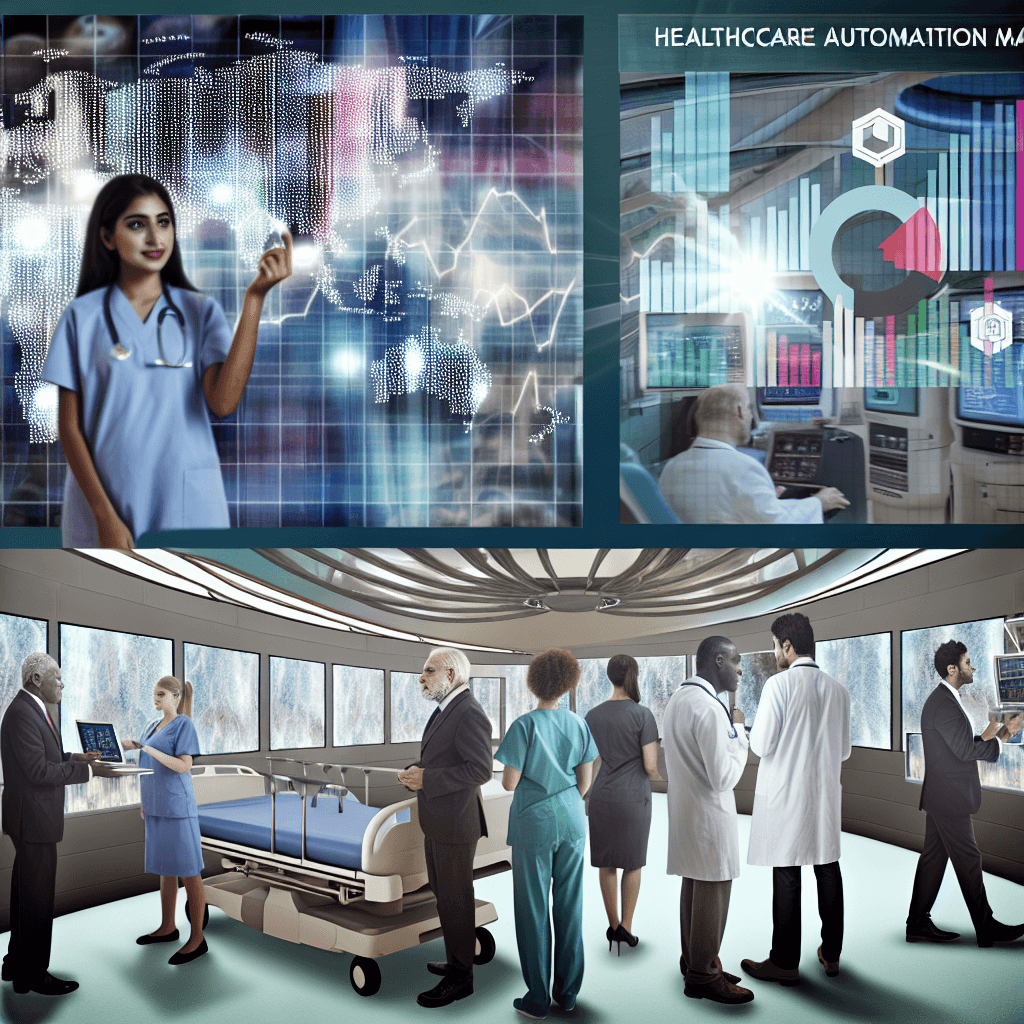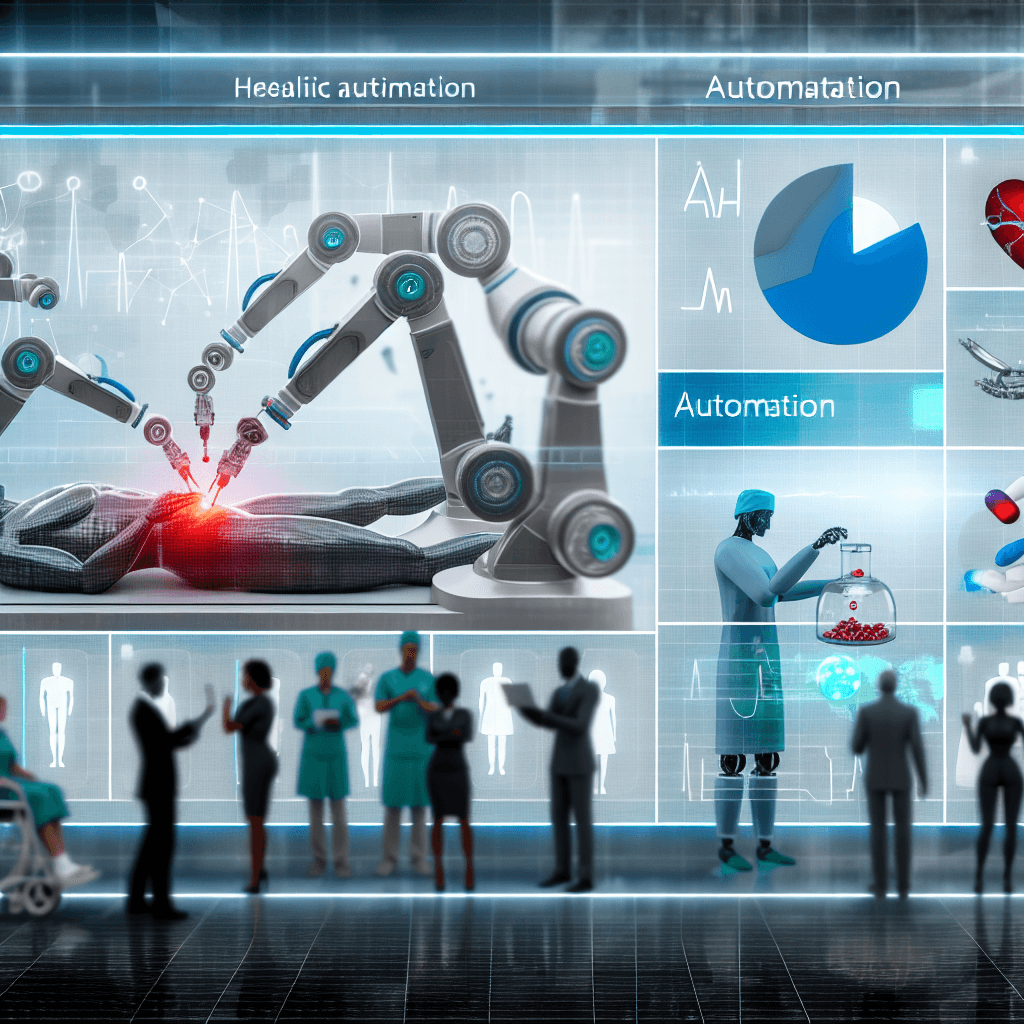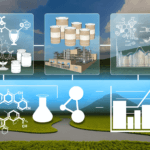Explore the healthcare automation market size, share, scope, and forecast trends. Unlock potential growth opportunities.
Healthcare Automation Market Size, Share, Scope & Forecast

Table of Contents
Healthcare Automation Market Size, Share, Scope & Forecast

The healthcare industry is undergoing a significant transformation, driven by the rapid advancement in technology. Automation in healthcare is playing a pivotal role in reshaping healthcare services, making them more efficient, cost-effective, and accessible. This article delves into the current market size, share, scope, and future forecast of healthcare automation, providing a comprehensive overview of its impact and potential.
Understanding Healthcare Automation
Healthcare automation involves the use of advanced technologies to perform tasks that were traditionally done by humans. This not only includes administrative tasks but also extends to direct patient care and diagnostics. The integration of automation in healthcare aims to reduce human error, increase efficiency, and lower costs while improving patient outcomes.
Current Market Size and Share
The global healthcare automation market has witnessed substantial growth over the past few years. According to a report by Grand View Research, the market was valued at approximately USD 34 billion in 2020 and is expected to grow at a compound annual growth rate (CAGR) of 8.8% from 2021 to 2028. This growth is attributed to several factors including the increasing demand for precision and robotic surgery, the rising need for compliance and risk management, and the growing adoption of automated laboratory services.
Scope of Healthcare Automation
The scope of automation in healthcare is vast and varied, encompassing several key areas:
- Diagnostic Automation: Automated diagnostic processes, including imaging and laboratory tests, help in achieving faster and more accurate results.
- Therapeutic Automation: This includes robotic surgeries and automated therapeutic processes which enhance precision and reduce recovery times.
- Lab and Pharmacy Automation: Automation in pharmacies and laboratories improves the efficiency of drug dispensing and sample analysis.
- Medical Logistics: Automated logistics solutions help in managing medical supplies more efficiently, ensuring timely availability of essential products.
Drivers of Growth in Healthcare Automation
The expansion of the healthcare automation market is driven by several key factors:
- Technological Advancements: Innovations in AI, robotics, and machine learning are pushing the boundaries of what can be automated.
- Increasing Healthcare Costs: Automation helps in reducing operational costs by minimizing manual processes and errors.
- Improving Patient Care: Automated systems provide faster and more accurate diagnostics and treatments, leading to better patient outcomes.
- Regulatory Compliance: Automation ensures better compliance with healthcare regulations and standards, reducing legal risks.
Challenges in Healthcare Automation
Despite its benefits, the adoption of automation in healthcare faces several challenges:
- High Initial Investment: The cost of implementing automated systems can be prohibitive for some healthcare providers.
- Data Privacy Concerns: Handling sensitive patient data through automated systems raises significant privacy and security concerns.
- Resistance to Change: There is often resistance from healthcare professionals due to fears of job displacement and mistrust in automated systems.
Case Studies and Examples
Several successful implementations of healthcare automation provide insights into its benefits and potential:
- Robotic Surgery: The da Vinci Surgical System is one of the most well-known examples of robotic surgery, offering high precision and control.
- Automated Dispensing Cabinets: These are used widely in pharmacies to manage medication distribution efficiently and safely.
- Electronic Health Records (EHRs): EHRs automate the storage, retrieval, and management of patient health information, enhancing the coordination of care.
Future Forecast and Trends
The future of healthcare automation looks promising with several trends likely to shape its trajectory:
- Integration of AI with IoT: The combination of AI and IoT devices is expected to enhance the capabilities of healthcare automation further.
- Expansion in Developing Countries: As technology becomes more accessible, developing countries are likely to witness rapid growth in healthcare automation.
- Focus on Patient-Centric Automation: Future developments are expected to be more patient-focused, enhancing personalized care through automation.
Conclusion
The healthcare automation market is set to expand significantly in the coming years, driven by technological advancements, the need to reduce healthcare costs, and the aim to improve patient outcomes. While challenges such as high costs and data security concerns persist, the benefits of automation in enhancing efficiency and accuracy in healthcare are undeniable. As the industry continues to evolve, healthcare providers worldwide are increasingly adopting automated solutions, signaling a transformative shift in how healthcare services are delivered.
In conclusion, the healthcare automation market holds substantial promise for transforming healthcare operations and patient care. With ongoing advancements and increased adoption, the future of healthcare looks increasingly automated, efficient, and patient-focused.








